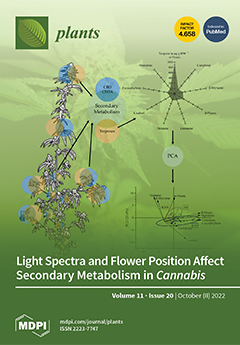One of the main problems in the animal industries currently is the constant provision of forage in sufficient amounts with acceptable nutritional content for large and small ruminants, as livestock is a significant source of income for rural people in the Loess Plateau region. Cereals and legumes are essential forage crops because of their nutritional significance, particularly the protein concentration in legumes and the fiber content in cereals. Therefore, combining cereal and legume crops may be a practical solution to the problems of inadequate forage nutrition, an insufficient amount of forage, unsustainable agricultural methods, and declining soil fertility. The current study predicts that mixed cropping of cereals and legumes at the harvesting stage of the soft dough stage and maturity stage based on the cereal growth stage will have different effects on forage biomass output, forage quality index, and nutritional value of the forage. In this study, wheat (
Triticum aestivum) and ryegrass (
Lolium multiflorum) are used as cereal crops and pea (
Pisum sativum), and alfalfa (
Medicago sativa) are used as legume crops. Three sample replicates and a split-plot design with a randomized block design are used. The study is conducted in the 2020–2021 and 2021–2022 cropping seasons. The experimental results show that cereal–legume mixed cropping, particularly the cereal–alfalfa combination, has a positive impact on the biomass yield and nutritional composition of the forage. However, adding peas to cereal has a negative impact on biomass yield, nutritional composition, mineral composition, and forage quality index. Among the treatments, ryegrass–alfalfa mixed cropping was shown to have higher values of WSC%, CP%, EE%, CF%, and ash% in both growing seasons. The values are WSC (15.82%), CP (10.78%), EE (2.30%), CF (32.06%), and ash (10.68%) for the 2020–2021 cropping seasons and WSC (15.03%), CP (11.68%), EE (3.30%), CF (32.92%), and ash (11.07%) for the 2021–2022 cropping seasons, respectively. On the other hand, the current study finds that cereal–alfalfa mixed cropping had a detrimental impact on NDF and ADF concentrations. All nutritional indices, including CP, WSC, EE, CF, ash, NDF, and ADF, have favorable correlations with one another. Furthermore, in both growing seasons, RA, ryegrass–alfalfa mixed cropping, has higher mineral compositions and forage quality indicators. Furthermore, harvesting times have a significant impact on the fresh biomass yield, dry matter yield, nutritional compositions, mineral compositions, and forage quality parameters (
p < 0.001), with the highest values being shown when harvesting at the soft dough stage. The current study concludes that, based on chemical composition and quality analysis, the soft dough stage is the greatest harvesting period, and that the cereal–alfalfa mixed cropping is the most preferable due to its maximized quality forage production and nutritional content in livestock feedstuff in the Loess Plateau region.
Full article






